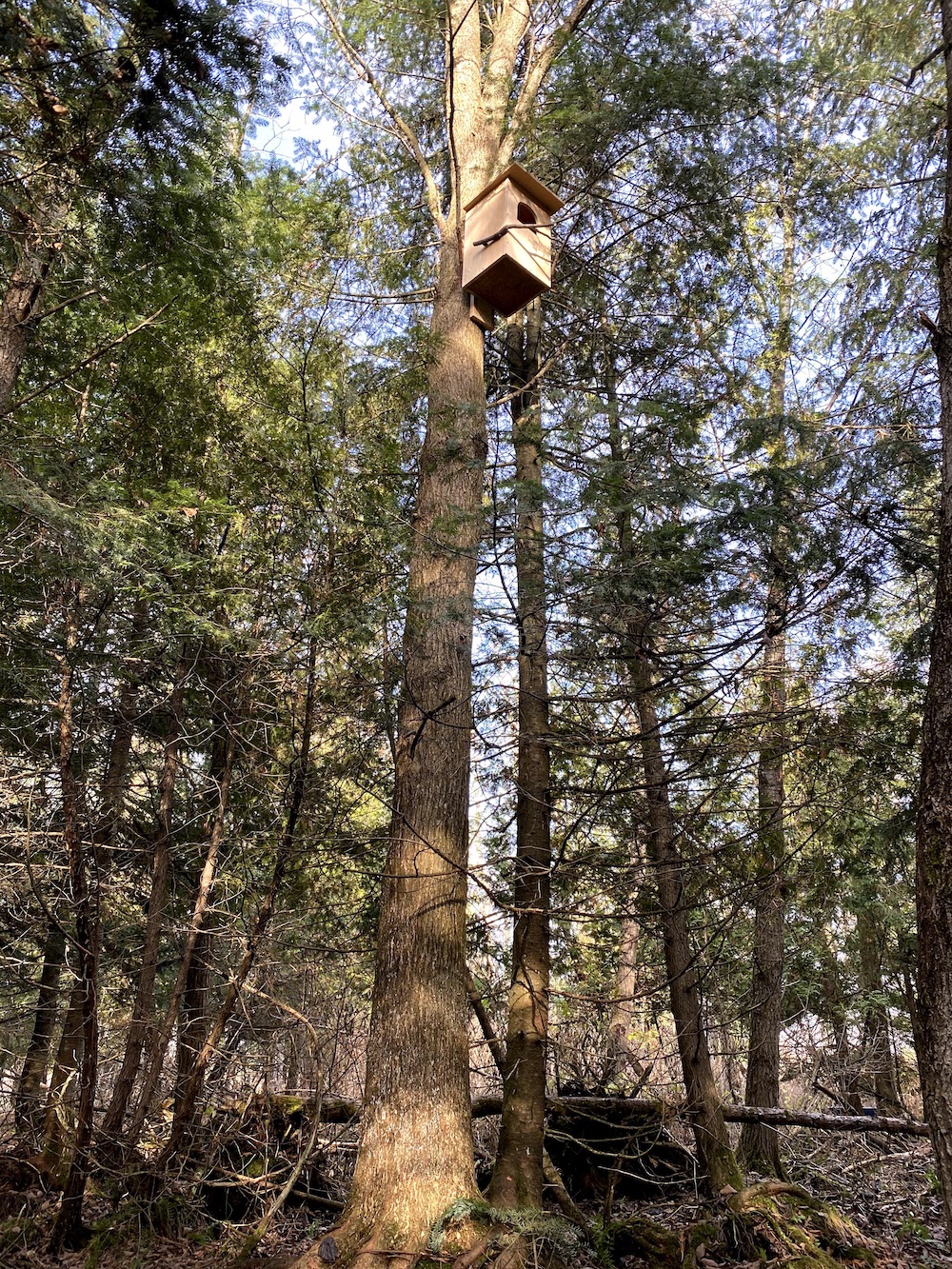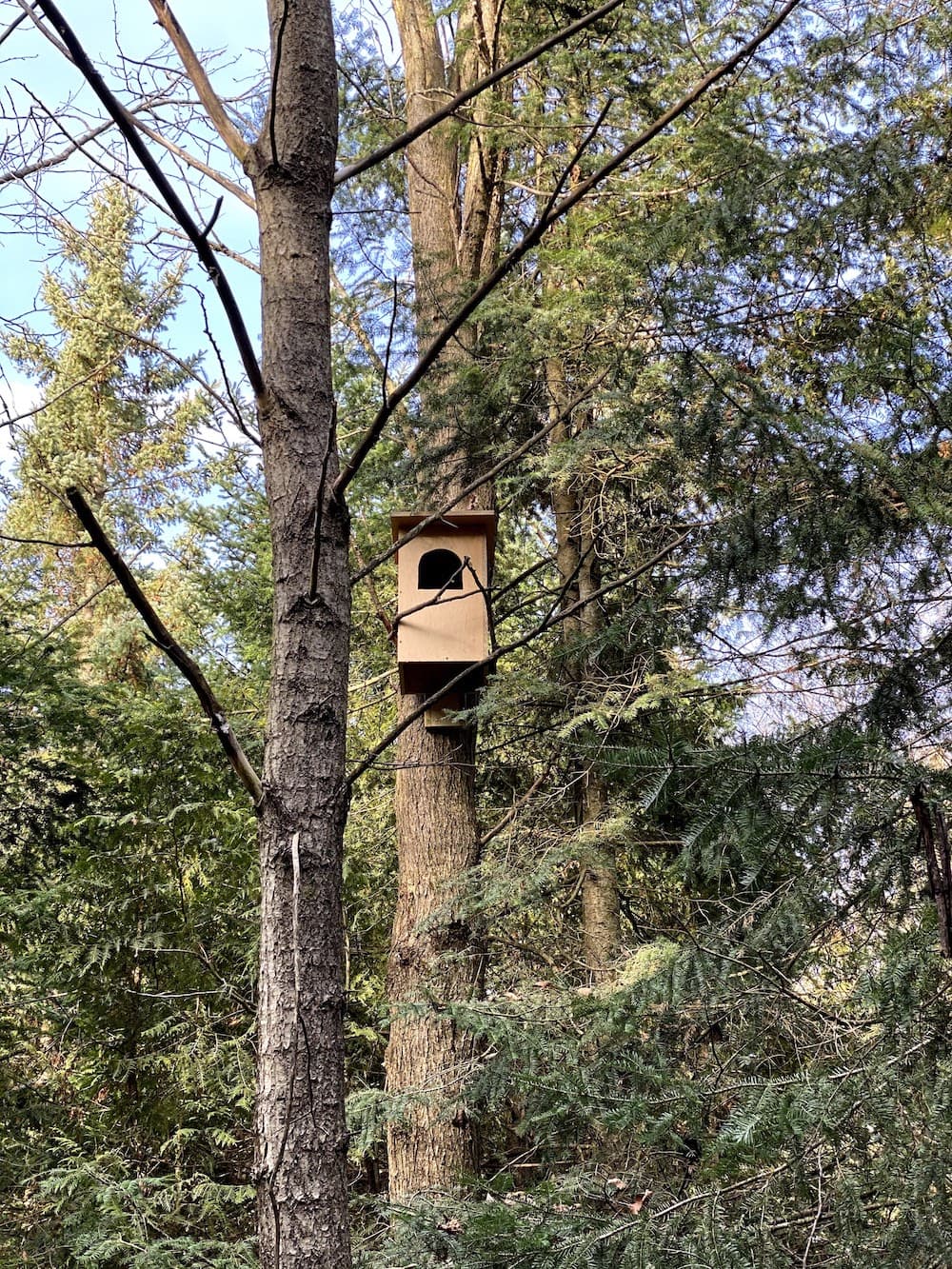I wrote previously about what an amazing year this has been for seeing owls in our woods. In fact birding in general has been so good that my wife has started calling this our "Large" Year, as a play on the idea of doing a Big Year when you can't leave your property during a global pandemic. Here's an amazing video she shot of the Barred Owl just waking up for the evening:
I texted my dad to tell him that I'd seen my first Barred Owl, and he replied a few days later to say that we'd better come and see what he'd been working on. It turns out that he and my mom had built us an Owl Nest Box (pdf).
I have to admit that I didn't know you could do this for owls. I've seen lots of nest boxes for other species. But it was news to me that owls would use them. When we got to their house, they showed us what was involved with installing it, using my mom's Redbud tree (which I don't think was her idea).

Please understand that this thing is heavy. Getting it into place involved a pulley, multiple straps, complex knots, and serious deck screws. Doing that at ground level was one thing; but it was hard to imagine how we'd accomplish this way up on a ladder.
We spent the next week hiking our woods, looking for an ideal location and tree. Our research had revealed the following requirements, which we tried to meet:
- The owls nest in winter so November was an ideal time to put up the box. It also helps keep wasps from building a nest inside.
- They want a mixed forest (hardwood and coniferous) within 200 feet of a water source. The adults like to roost in Hemlocks or White Pine nearby.
- They look for a cavity in a tree between 12' and 40' off the ground.
- You want a tree that is set back from the edge of a clearing, where a clear flight path is open to the front of the nest box's entry hole.
- You want branches around the box that the young can use when coming out of the box, and the parents can sit on.
- Once the family moves in, they (and often their offspring) will often use the box for life.
I also did a bunch of research into the type of tree to look for. This paper was particularly helpful, and confirmed that a large Elm we'd found might work well.
On the day of installation, my wife's parents were kind enough to assist us with their tools, an enormous ladder, and a great deal of know-how. Together we got it safely raised and installed. I'm really happy with the outcome.


Our next goal is to get a trail cam to set up across from the box. We're going to try to collect video of what we hope will be an exciting winter, spring, and summer of owlets. Our girls are already working on their names.
Here are some similar videos from the Cornell Bird Lab of Barred Owl nest boxes. These were incredibly helpful too, as we tried to understand what to look for in our site.
When I was growing up, I'd always wanted to be an Ornithologist. Reseraching the ideal habitat for this nest box was probably as close as I'll come to this, and I found it a really rewarding, once in a lifetime experience.